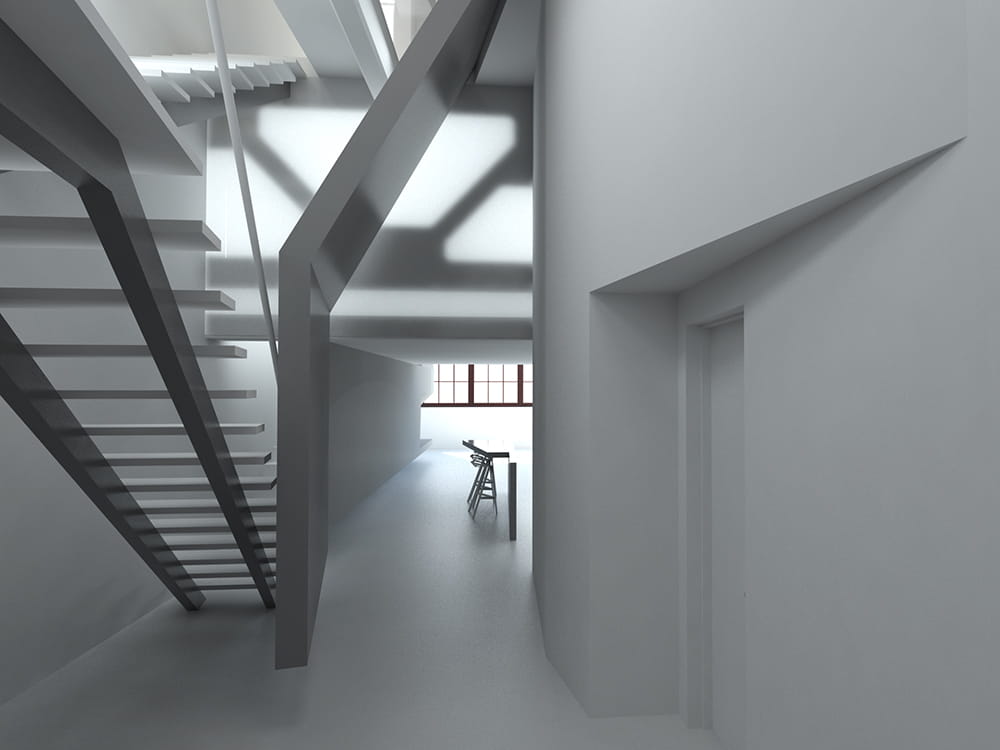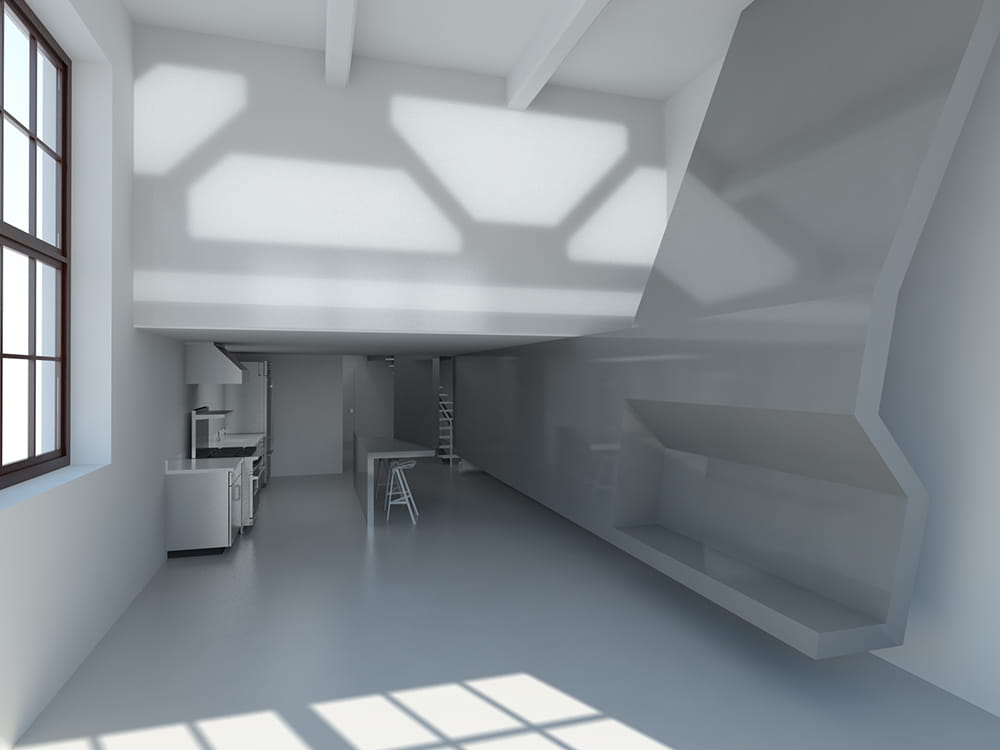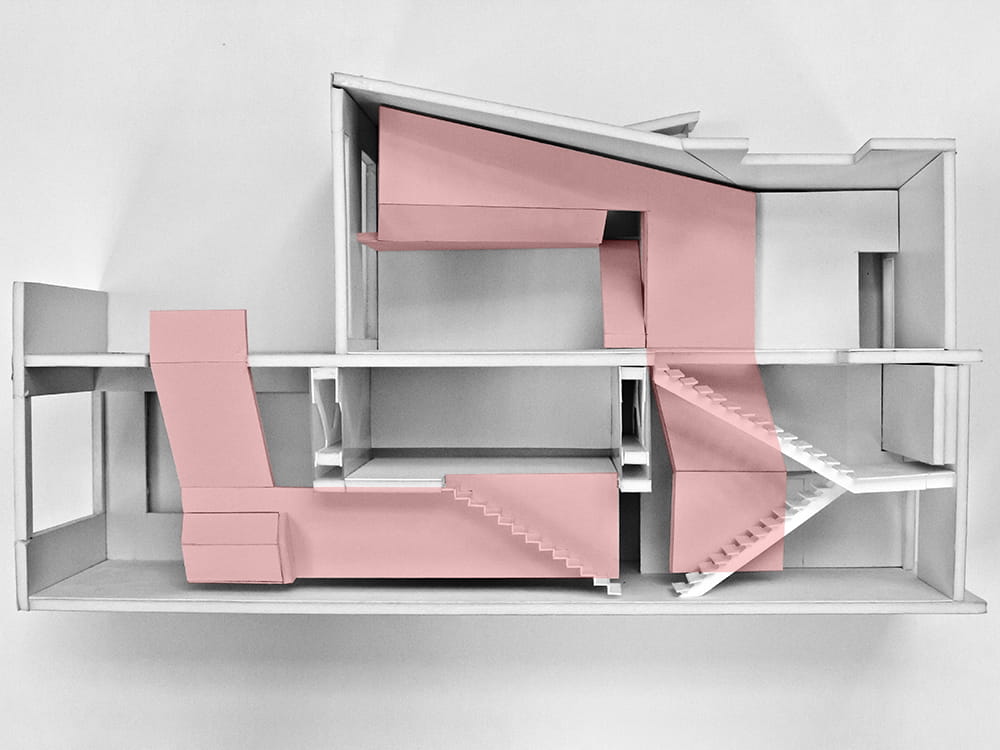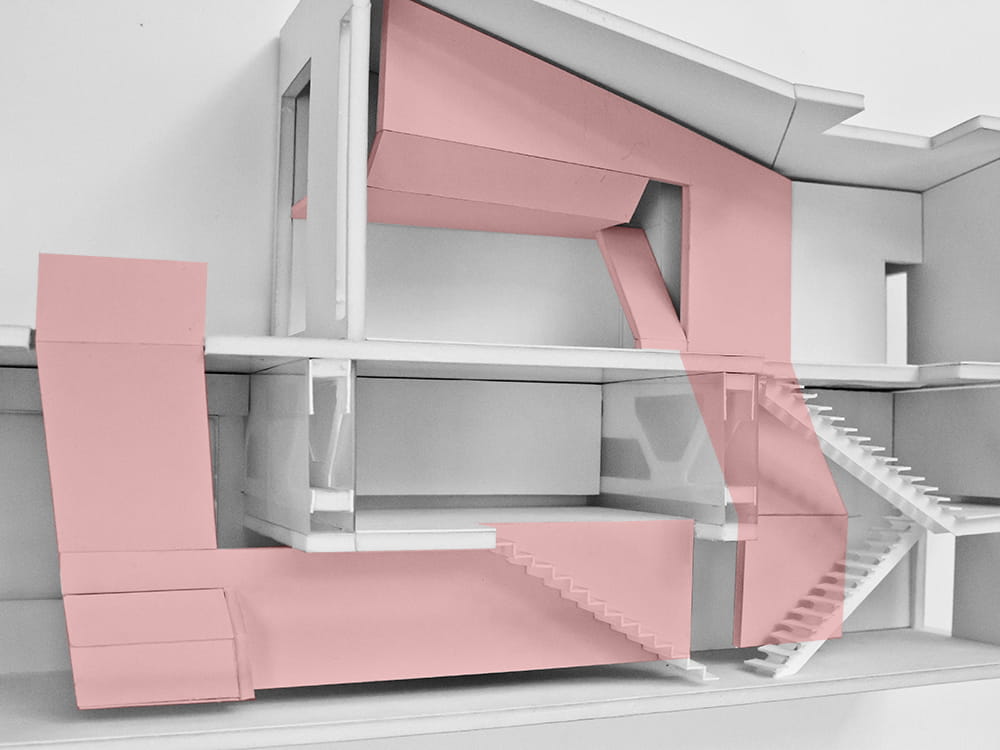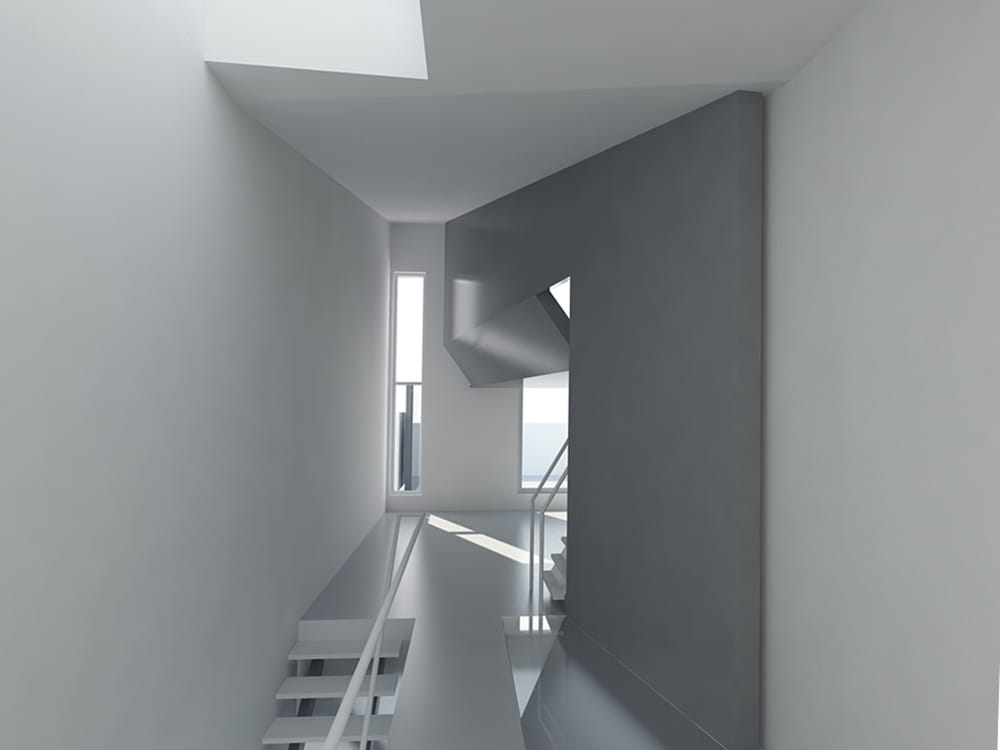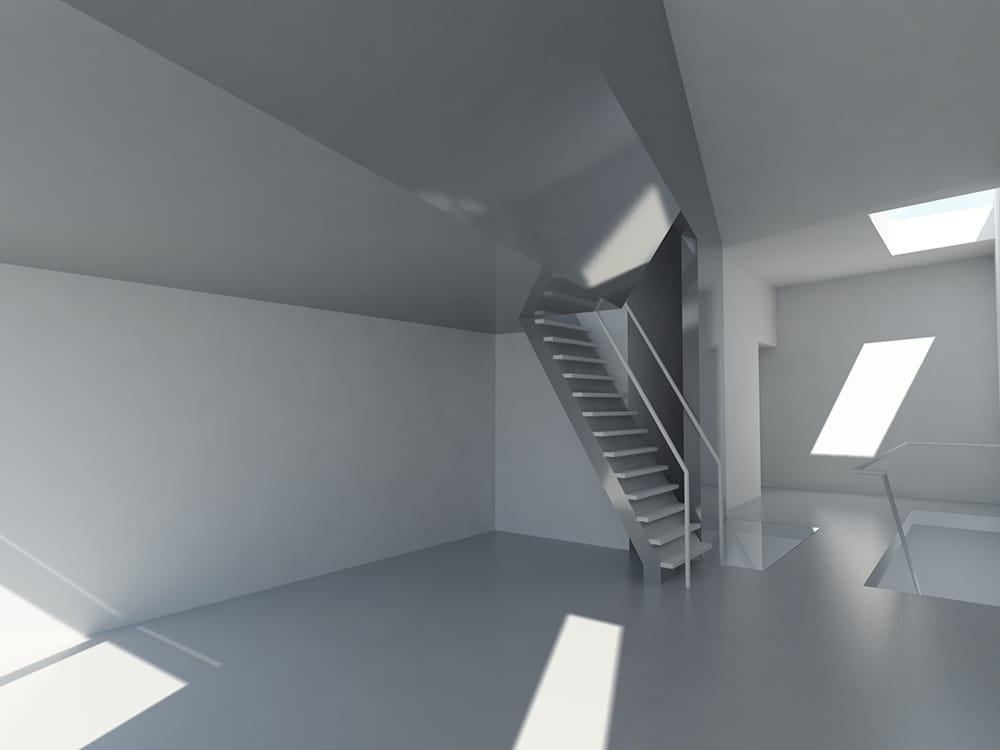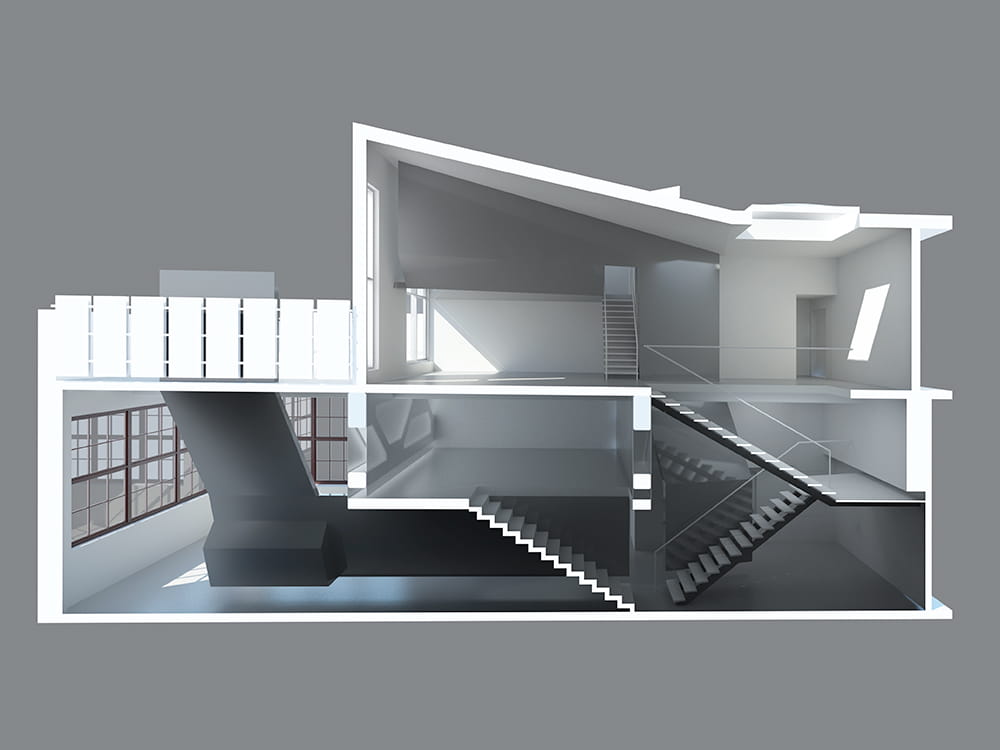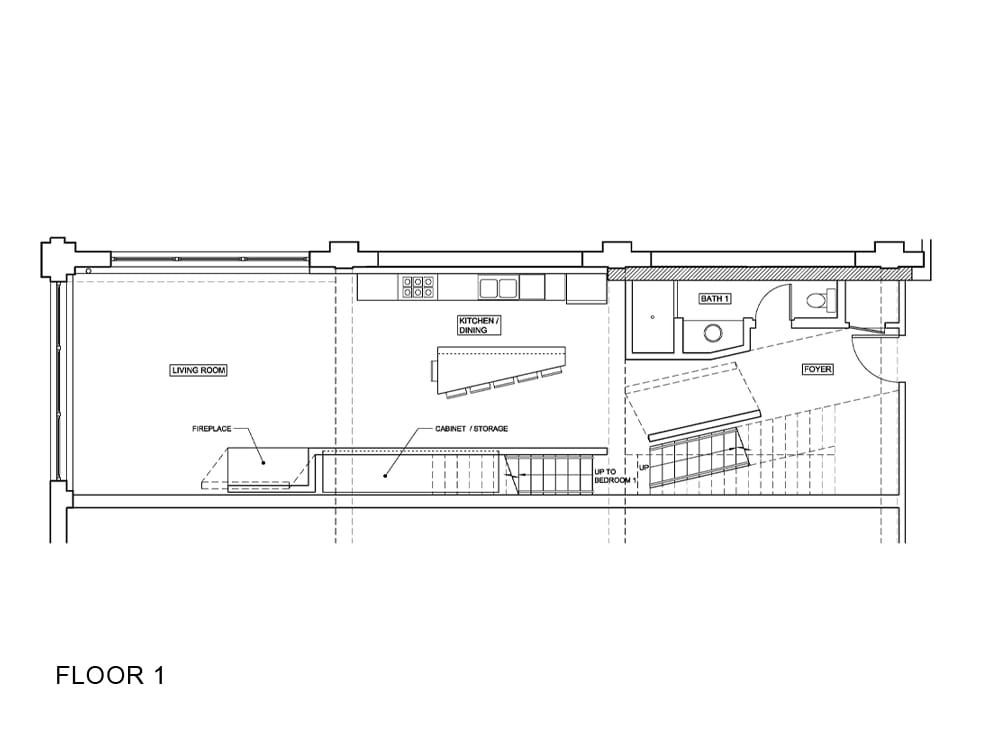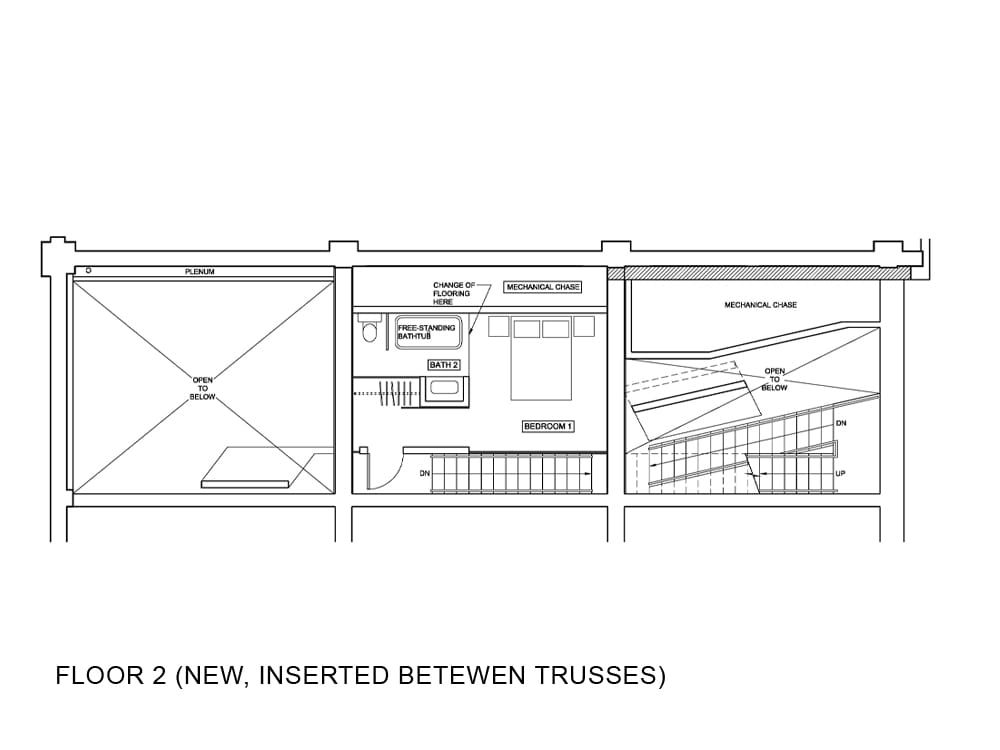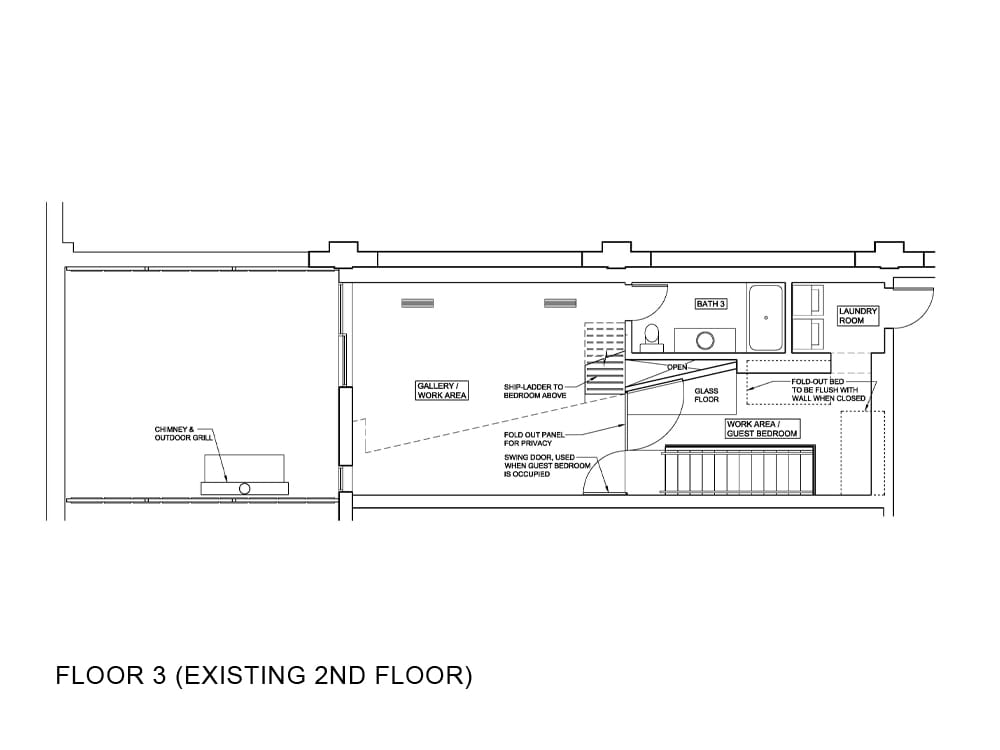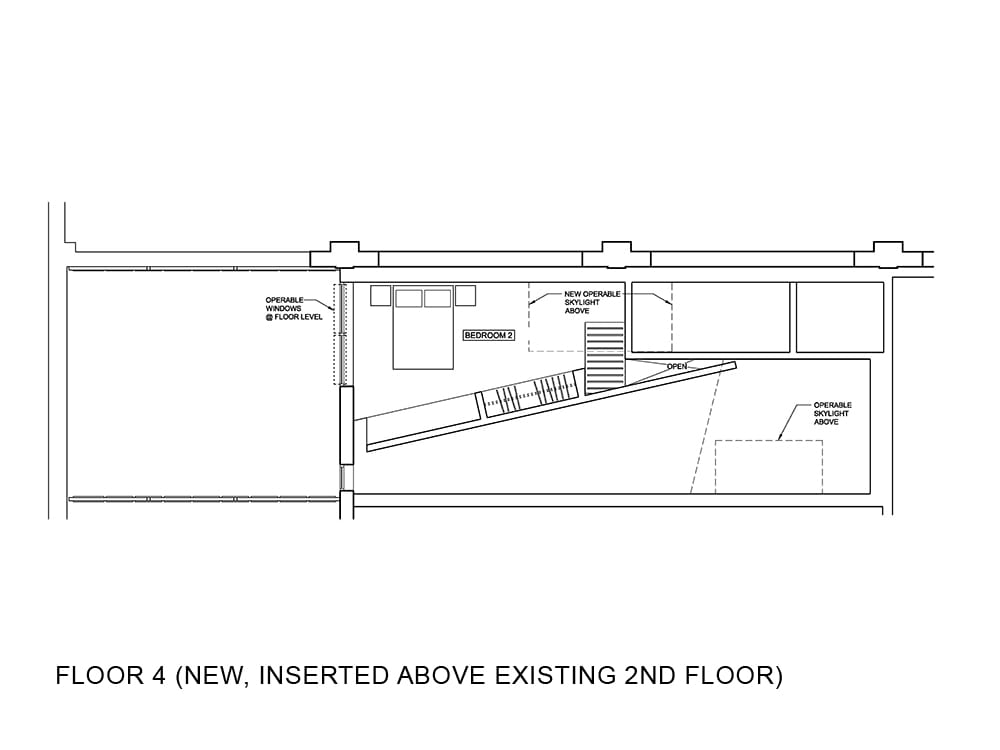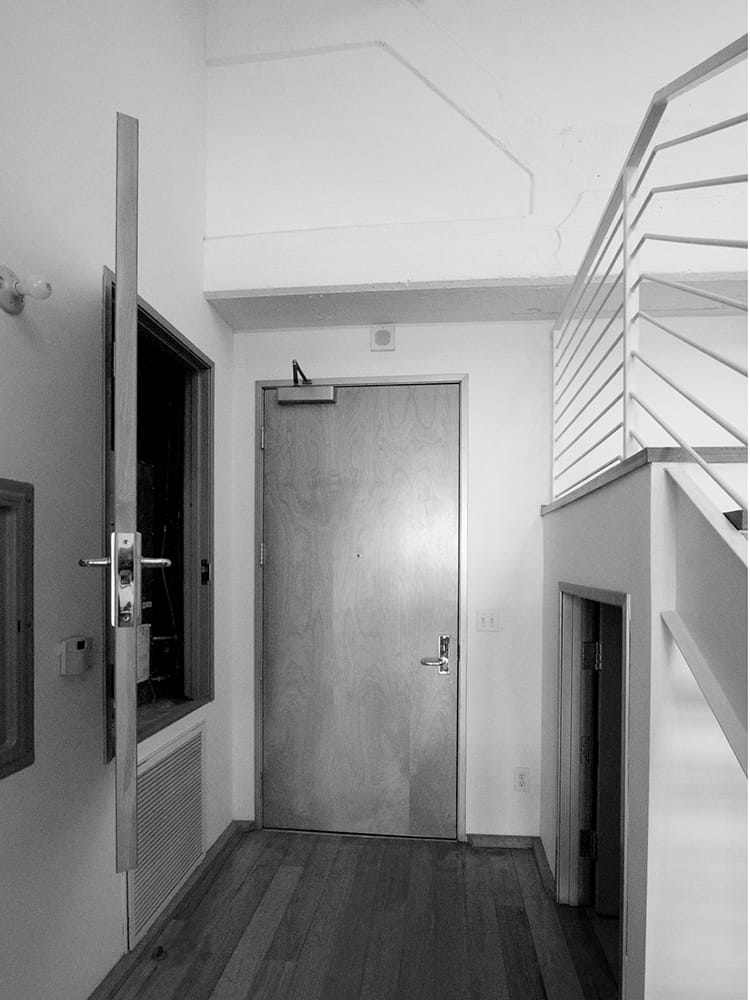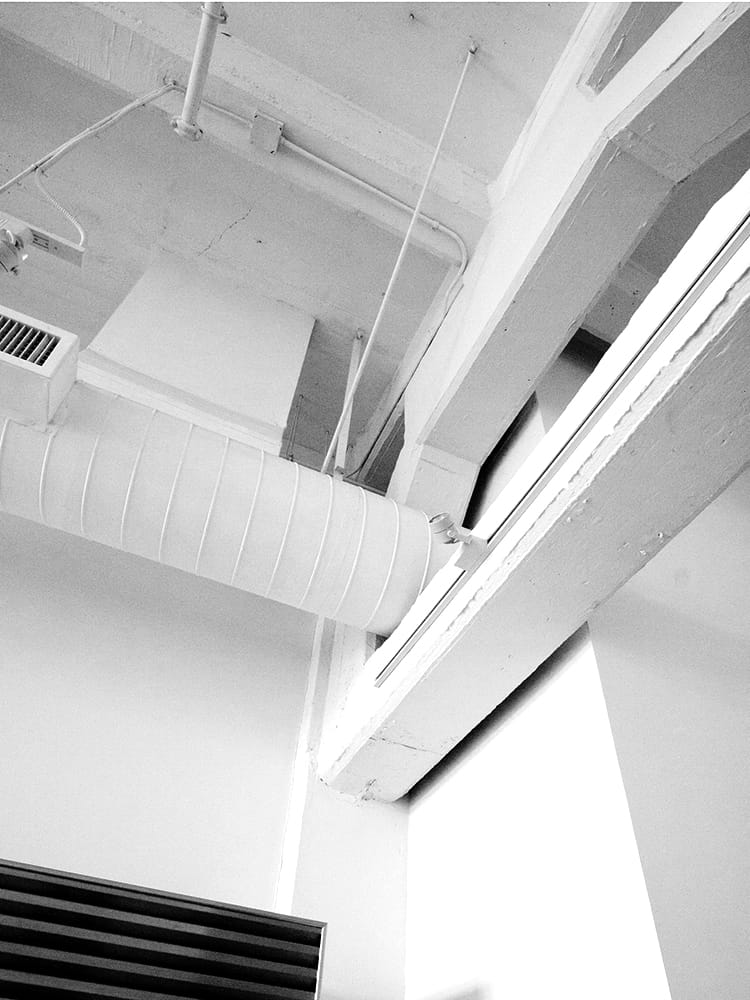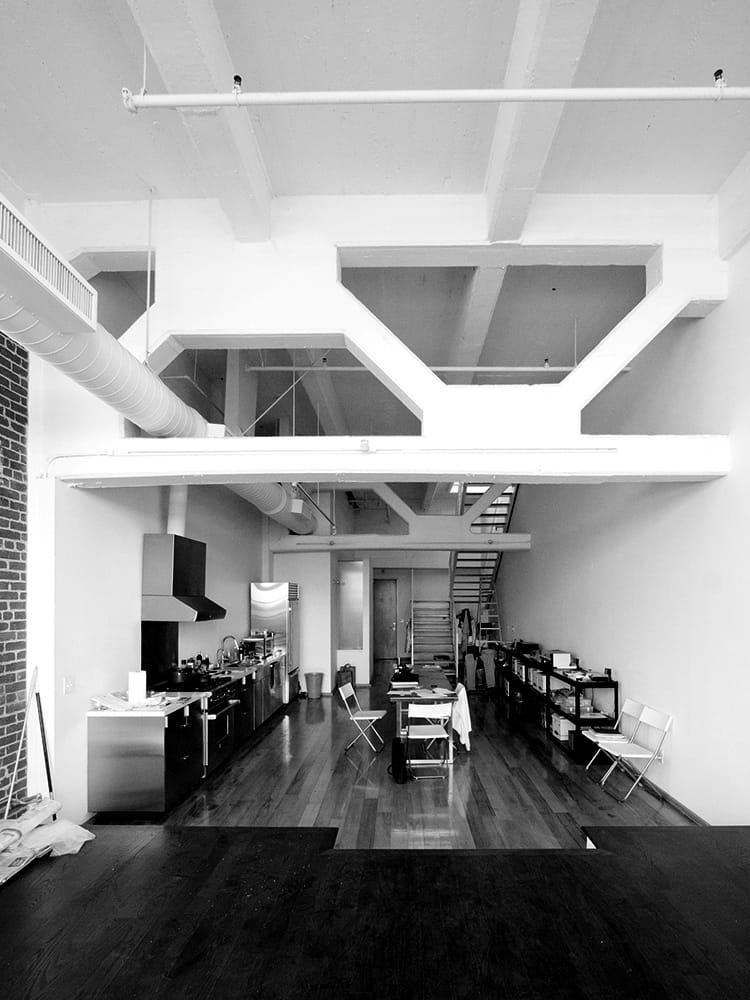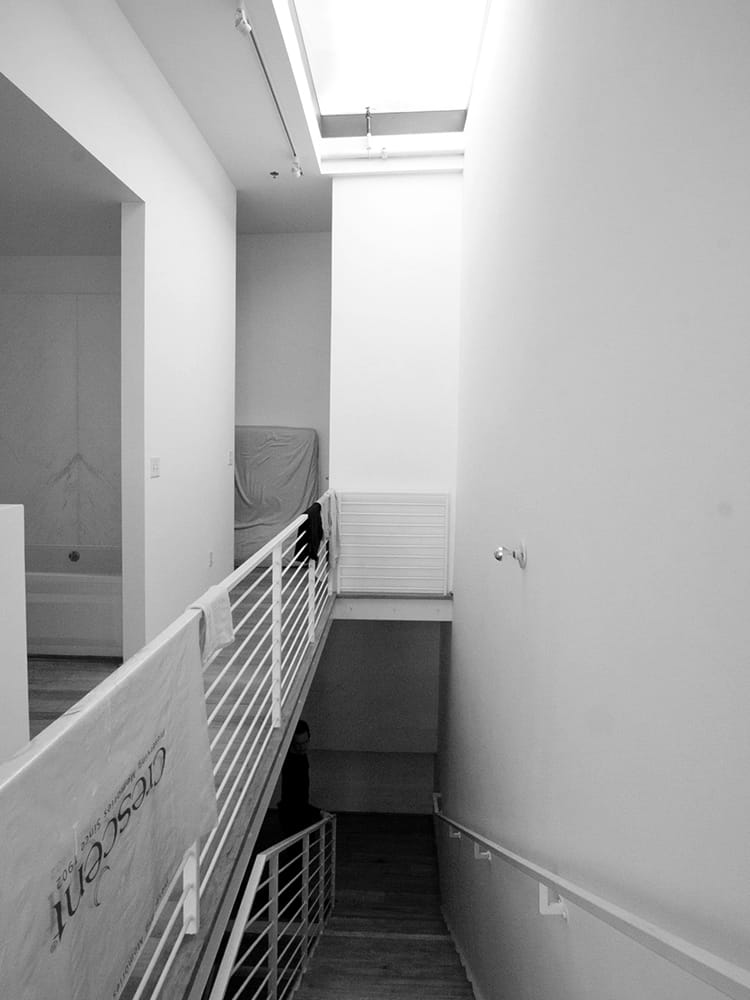Biscuit Loft 711
2012, Unbuilt
The Biscuit Company Lofts in Downtown Los Angeles was a residential loft conversion 2006 from the 1925 Nabisco (National Biscuit Company) West Coast bakery under the Adaptive Reuse Ordinance (ARO), a piece of legislation enacted by City of Los Angeles in 1999.
Biscuit Loft 711, located on the top level of the building, features a 16-foot-high ceiling and a rooftop addition incorporated during its 2006 conversion. The unit has two historic facades adorned with large brass-framed windows. In 2012, Yeh Design Lab was commissioned to redesign Loft 711 for two Japanese sisters, heirs to a prominent Japanese publishing house. Primarily residing in Tokyo, the sisters purchased the loft to serve as their workshop and home base while working on a monograph for a renowned American artist, actor, and filmmaker. During their stays in Los Angeles, they were accompanied by two live-in staff/confidants from the publishing house, necessitating the conversion of a one-bedroom loft to accommodate more functional spaces – two bedrooms, one sleeping quarter (for two staff), and two workshop/living room/gallery spaces.
The redesign introduced a mezzanine floor, nestled between two 6’-deep concrete trusses original to the industrial building, to create Bedroom #1. Bedroom #2 was incorporated into the rooftop addition as a sleeping loft with sufficient standing height. The redesign effectively transformed the two-level loft into four levels. To improve the flow and functionality, the design replaced the existing switchback stairs—whose awkward landing narrowed the entryway—with two new staircases. To unify all the programmed spaces into a cohesive whole, a continuous architectural element was introduced, suspended from the loft’s rooftop addition and hovering above the Level 1 floor. (Refer to pink overlays on the physical model.)
From the top down, this suspended element functions as a wall, a ship ladder, and the underbelly of Bedroom #2. As it extends downward, it penetrates a glazed floor into the lower levels. Near the entrance on Level 1, it screens the tall stairs, creating a foyer that allows the loft’s interior to reveal itself gradually: first, natural light washes over the canyon-like wall, emphasizing its verticality; then, the kitchen comes into view, followed by the workshop/living room, which is bathed in sunlight from the large windows.
As the element travels westward toward the kitchen, it splits, creating a doorway to two sets of stairs (private and public) while still shielding them. Continuing through the kitchen and workshop area, the element carves out deep storage space, serves as a media wall, transitions into a fireplace, and finally returns to the deck at Level 3 as a chimney.
Both new bedrooms are equipped with a private bathroom, allowing the bathroom on Level 3 to be shared by the two staff in the sleeping quarter. The concrete trusses are encased in frosted glass to preserve their historical presence, allowing natural light to filter through, and concealing the imperfections of the century-old construction with the trusses’ silhouette remaining visible.
Design Team:
Yi-Hsiu Yeh
Nick Gillock
Renderings by Emil Mertzel.


